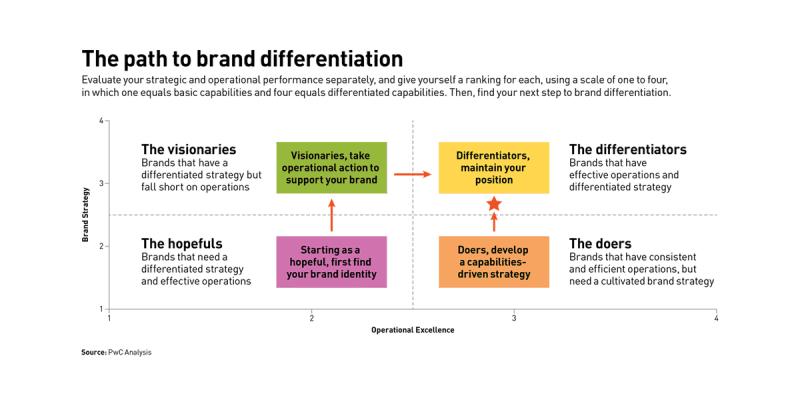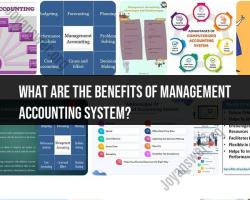How to create a differentiation strategy?
Creating a differentiation strategy involves defining how your product or service stands out from competitors in a way that is valuable to your target audience. Here are the steps and considerations to help you develop a differentiation strategy:
1. Know Your Target Market:
- Identify your target audience and understand their needs, preferences, and pain points. What problems are they trying to solve, and what are their priorities?
2. Conduct a Competitive Analysis:
- Research your competitors to understand their strengths and weaknesses. Determine what makes your product or service unique in comparison to others in your industry.
3. Define Your Value Proposition:
- Develop a clear and concise value proposition that explains the unique benefits of your product or service. Your value proposition should address how you solve your target market's problems or fulfill their needs better than the competition.
4. Identify Your Points of Differentiation:
- Determine the specific features, attributes, or aspects of your product or service that set it apart. These could be related to quality, design, technology, pricing, customer service, or any other relevant factors.
5. Focus on Core Competencies:
- Concentrate on areas where your business excels and where you can genuinely differentiate yourself. Trying to be unique in every aspect may be impractical and dilute your efforts.
6. Tailor Your Messaging:
- Craft marketing messages and materials that communicate your points of differentiation clearly and effectively. Ensure that your messaging resonates with your target audience and emphasizes the benefits they will receive.
7. Develop a Unique Brand Identity:
- Create a distinctive brand identity that reflects your differentiation strategy. This includes your logo, visual branding, and the tone and style of your communication.
8. Invest in Research and Development:
- Continuously innovate and invest in research and development to stay ahead of the competition and maintain your points of differentiation.
9. Train and Develop Your Team:
- Ensure that your team understands and can articulate your differentiation strategy. They should be able to deliver a consistent customer experience that reflects your unique value proposition.
10. Test and Refine:- Regularly review the effectiveness of your differentiation strategy. Collect feedback from customers and make adjustments as needed to ensure your differentiation remains relevant.
11. Monitor the Market:- Keep an eye on changing market trends, competitor actions, and shifts in customer preferences. Adapt your differentiation strategy as necessary to stay competitive.
12. Measure Success:- Establish key performance indicators (KPIs) to measure the success of your differentiation strategy. Track metrics like market share, customer retention, and customer satisfaction to assess its impact.
13. Be Consistent:- Consistency is key in maintaining your differentiation strategy. Ensure that every aspect of your business, from product development to customer service, aligns with your differentiation strategy.
14. Protect Your Intellectual Property:- If your differentiation strategy relies on unique technology, designs, or intellectual property, consider legal protection to prevent competitors from copying or replicating your advantages.
Creating a differentiation strategy is an ongoing process. It requires a deep understanding of your market and a commitment to delivering exceptional value to your customers. By consistently providing what sets you apart from the competition, you can build a strong and sustainable competitive advantage.
Creating a Differentiation Strategy: Steps and Considerations
A differentiation strategy is a crucial element for businesses to establish a distinct identity, attract customers, and achieve competitive advantage. It involves identifying and emphasizing unique qualities that set a product, service, or brand apart from its competitors. To create an effective differentiation strategy, consider the following steps:
1. Understand Your Target Audience: Thoroughly research and understand your target market's needs, preferences, and pain points. Identifying their unmet needs or underserved desires can provide valuable insights for differentiation opportunities.
2. Analyze Your Competitors: Conduct a comprehensive analysis of your competitors' strengths, weaknesses, and positioning. Identify areas where you can excel or offer something different to attract customers and capture market share.
3. Define Your Unique Selling Proposition (USP): Identify and articulate your USP, which is the core differentiator that sets you apart from competitors. This USP should be clear, concise, and compelling, highlighting the unique benefits you offer to customers.
4. Evaluate Your Internal Capabilities: Assess your internal resources, skills, and expertise to determine areas where you excel and can leverage for differentiation. Identify areas where you can invest or develop capabilities to support your differentiation strategy.
5. Develop a Differentiation Plan: Create a detailed plan outlining how you will implement your differentiation strategy. This plan should include specific actions, timelines, and responsible parties to ensure effective execution.
6. Monitor and Adapt: Continuously monitor the effectiveness of your differentiation strategy and make adjustments as needed. Track customer feedback, market trends, and competitor activities to ensure your differentiation remains relevant and impactful.
Crafting Your Unique Selling Proposition: Strategy Development
Your unique selling proposition (USP) is the cornerstone of your differentiation strategy. It's the concise articulation of what makes you different and why customers should choose you over the competition. To craft a compelling USP, consider the following guidelines:
1. Focus on Customer Value: Your USP should clearly convey the unique value you offer to customers. Highlight how you solve their problems, address their needs, or provide benefits they can't find elsewhere.
2. Be Specific and Differentiating: Avoid generic or vague statements. Clearly articulate what makes you different and why your offering is superior to alternatives.
3. Support Your Claims with Evidence: Substantiate your USP with supporting evidence, such as testimonials, case studies, or industry recognition. This builds credibility and reinforces your differentiated position.
4. Keep it Simple and Memorable: Craft a USP that is easy to understand and remember. Use concise language and avoid jargon or technical terms that might alienate potential customers.
5. Test and Refine Your USP: Test your USP with potential customers to gauge their understanding and receptiveness. Refine your messaging based on feedback to ensure your USP resonates effectively.
The Art of Standing Out: Building a Differentiation Strategy
Building a differentiation strategy is an art that requires creativity, strategic thinking, and an understanding of your target audience. To stand out in a competitive marketplace, consider these additional tips:
1. Embrace Uniqueness: Don't be afraid to be different. Challenge industry norms and explore unconventional approaches to differentiation.
2. Focus on Emotional Connection: Appeal to your customers' emotions and aspirations. Create a brand personality and storytelling that resonates with their values and desires.
3. Deliver on Your Promises: Ensure that your products, services, and customer experiences consistently deliver on the promises made in your differentiation strategy.
4. Continuously Innovate: Differentiation is an ongoing process, not a one-time event. Stay ahead of the curve by continuously innovating and seeking new ways to differentiate yourself.
5. Embrace Feedback and Adapt: Be open to customer feedback and market trends. Adapt your differentiation strategy as needed to remain relevant and competitive.












